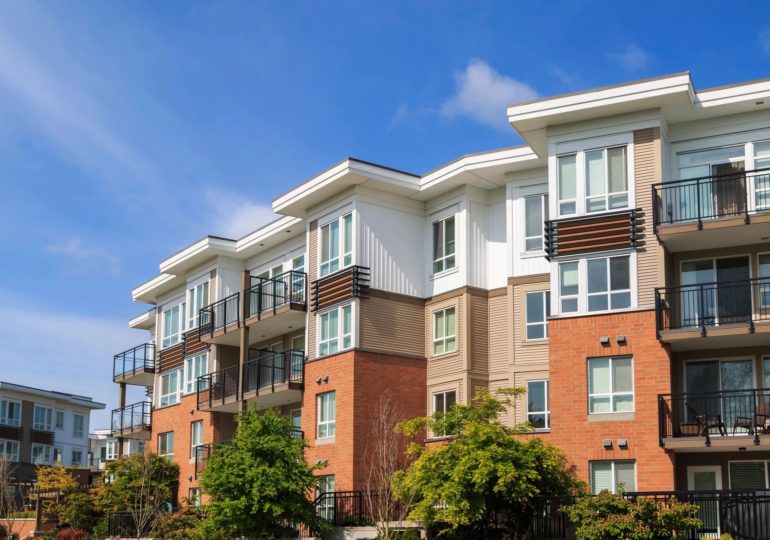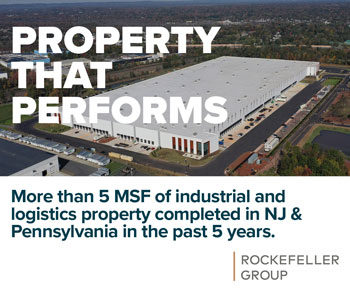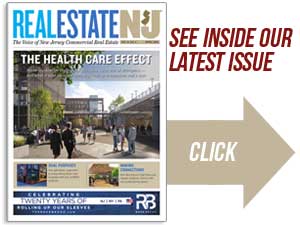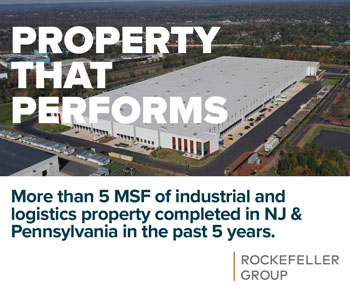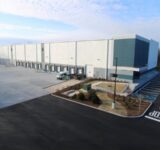Real Estate NJ set out to identify the biggest public policy issues for commercial real estate, as New Jersey begins a new legislative session and a new administration under Gov. Phil Murphy.
Here are the issues identified by David Brogan, executive director of the New Jersey Apartment Association:

Affordable housing and housing affordability
The Murphy administration has come out of the gate with some big and bold ideas. But, if this administration wants to do something significant, if not historic, for a New Jersey’s most underserved (and unfortunately often forgotten about) residents, then focusing on affordable housing for low-income families is that issue. Ensuring that, even in the face of inconsistent federal affordable housing policy, New Jersey will be there for its most vulnerable families is something that is not only good public policy, but it is something that legacies are made of.
The lack of affordable housing for low-income families as well as the housing affordability crisis facing average New Jerseyans are two issues that must be addressed by the new legislature and governor. In general, housing policy has not been a priority for this state for the last decade. Now, with tax changes at the federal level hurting New Jersey homeowners and renters, the state must take a leadership role in addressing these issues.
Beyond the lack of a comprehensive statewide affordable housing policy and mission; a series of factors are occurring that could devastate affordable housing operation and development in this state. This ‘perfect storm’ includes: the recent changes in federal tax policy and the subsequent lessening of demand for tax credits that are used to fund affordable housing construction; cuts in federal funding for affordable housing programs; and new state mandates that drive up the cost of both construction and operation of affordable housing communities.
More specifically:
- The Low Income Housing Tax Credit (LIHTC) program is the largest source of funding for affordable housing projects across the country. The LIHTCs are credits that are allocated to affordable housing developers, and subsequently sold to get private investment in affordable housing projects. The benefits to private investors include tax credits and tax deductions. The benefit to the developers is the influx of much needed capital to pay for the construction of the project. Given that the value of the tax credit is tied to federal tax policy, the recent reduction of both the corporate business tax and the income tax rates lead many to believe that the value of, and demand for, the LIHTCs will drop. Less demand means less funding. Less funding means less affordable housing development.
- Beyond the impact of the recent tax cuts on LIHTCs, other programs funded by the U.S. Department Housing and Urban Development (HUD) also appear to be slated for cuts. The HOME program provides grants to states and municipalities that can be used for development, purchase and rehabilitation of affordable housing. The impact of such a cut would be less money available to bridge the gap between funds that are raised though the LIHTC program and the actual cost of the projects. Without that ‘bridge funding,’ many projects will not get built.
- The third issue that impacts both affordable and market rate housing is the cost of mandates. New Jersey has consistently imposed more and more mandates on both the operation and construction of multifamily housing. As it pertains to affordable housing development, this could include prevailing wage requirements, construction material requirements such as use of concrete instead of wood, as well as other mandates in the name of renter protections. While sometimes well-intentioned, these mandates can drive up the cost of both operation and construction significantly. And when you couple the aforementioned cuts with the increased costs of mandates, the impact on affordable housing could be devastating.
Beyond the gloomy outlook on affordable housing funding, we must better grasp where the state of New Jersey stands in addressing the affordable housing needs of its citizens. Specifically, New Jersey needs at least 100,000 NEW units of affordable housing in this state over the next 10 years to meet the demand. Where does that leave us?
With the federal government appearing to lessen its role in the investment in affordable housing, it is up to the state to step up. And while much of the talk surrounding affordable housing focuses solely on development, the New Jersey Apartment Association (NJAA) believes that any solution must be multifaceted in its approach. First, the governor and the Legislature must make a commitment to address the affordable housing crisis we face. Second, we must treat both development of new affordable housing and preservation of existing affordable housing as equally important. And third, we must come up with a state funding source to address the production and preservation of affordable housing in this state.
More specifically on the issue of preservation, the state must assist existing affordable housing operators in ensuring they can continually maintain, reinvest, improve and upgrade their properties. Unfortunately, the concept of preservation consistently gets lost in the discussion of affordable housing. While the thought of owning a house for 50 years without maintaining, upgrading or improving it is abhorrent, our state’s current policies force long-term affordable housing owners into that very situation. With rents kept at government-mandated levels, there is little-to-nothing affordable housing owners and managers can spend to reinvest in those properties. Furthermore, with many tax abatements ending (because abatements only have a lifespan of a few decades), these properties are going to further deteriorate if there is no government help. Two things that can be done are:
- Allow municipalities to extend the existing tax abatements on older affordable housing communities. Many tax abatements end in 30 to 35 years. Allow municipalities to renegotiate and extend those abatements, ensuring that dramatic cost increases (in taxes) do not occur. This will help the owner/operators of affordable housing to keep their rents low and still have funds to invest in their properties.
- Allow municipalities to count rehabilitation of existing affordable housing communities in their COAH obligation. This does not need not be a one-for-one calculation, but even giving a 50 percent credit for rehabilitation/revitalization of affordable housing communities would incentivize municipalities to reinvest and ultimately bring properties in need of rehabilitation into better condition. Most importantly, this would create a better quality of life for those living there.
In terms of development, the state should follow the recommendation of the Smart Growth Economic Development Coalition and revitalize the Economic Redevelopment and Growth (ERG) program. ERG pledges future tax revenues from a project to help developers plug financing gaps. This would provide a much-needed infusion of capital and gap funding into those projects.
Also, NJAA calls for grants for both the preservation and production of affordable housing. There is a high probability that the sales tax will be brought back to seven percent. If Gov. Murphy would dedicate $100 million to $200 million of that money annually toward the preservation and production affordable housing, he would be making an innovative and significant policy change that would help this state meet its affordable housing needs.
Finally, while there is much discussion about affordable housing, the state must also focus on housing affordability. Given that the average house in New Jersey is over $300,000, apartment living is literally the last affordable option for the average New Jersey resident. Both the Legislature and the governor must understand that maintaining, operating and improving professionally managed multifamily properties is not easy. With New Jersey being one of the highest cost of living states, any increase in those costs could be devastating to property owners. As such, both the governor and Legislature need to be cognizant that every mandate has a cost. Whether it is prevailing wage, window guards, building materials or any other mandate, these costs must be made up somewhere, and that can ultimately impact rents. No one in New Jersey wants to see the cost of housing rise, but Trenton can do more to lessen this impact by taking into consideration the cost factors associated with any new mandates.
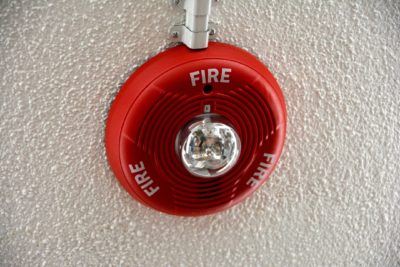 Fire safety
Fire safety
New Jersey is considered a leader in imposing mandates that drive up the cost of business, and in our case, the cost of housing. While legitimate issues may arise that warrant certain changes in construction standards, the extent to which those changes are mandated directly impacts housing costs. Last session, there was a myriad of bills introduced in response to a fire at a large multifamily community in North Jersey. While multifamily living is still one of the safest places to live, there was a policy focus on large, five-story, primarily wood-framed buildings and firefighter access to those taller buildings. NJAA supports requiring the enhanced NFPA 13 sprinkler systems in the large, five-story, podium-style (meaning the first story is a parking garage, retail or other concrete structure) construction. Specifically, in buildings where there is one story of concrete and four stories of wood framed living space above, NJAA supports enhanced sprinkler systems. But, we do not support requiring buildings to be made out of concrete or additional fire mandates on other buildings. There simply is no justification for such mandates.
The safety of our residents has been, and will always be, our top priority. Furthermore, NJAA stands ready to work with legislators on common-sense solutions to legitimate issues. However, decision makers must balance the cost of ‘enhanced fire suppression’ with both the effectiveness of any such code changes, as well as the cost associated with implementing those changes.
More specifically, whether it’s affordable housing or market rate housing, New Jersey must find a balance between the new requirements the state government wants to impose on housing and the impact those mandates will have on the cost of rent, the cost of construction and ultimately the cost of housing as a whole. We do not have the luxury of simply putting our heads in the sand. Doing so will not only exacerbate the housing affordability crisis we currently face in this state, but also forestall the development of much-needed affordable housing for low-income families that need it.
While 2018 is sure to be an interesting year, both the Legislature and the governor have an opportunity address a variety of issues that have been languishing for some time. Whether it is policies that promote affordable housing or addressing the housing affordability crisis, NJAA stands ready to be a partner in formulating those solutions.

